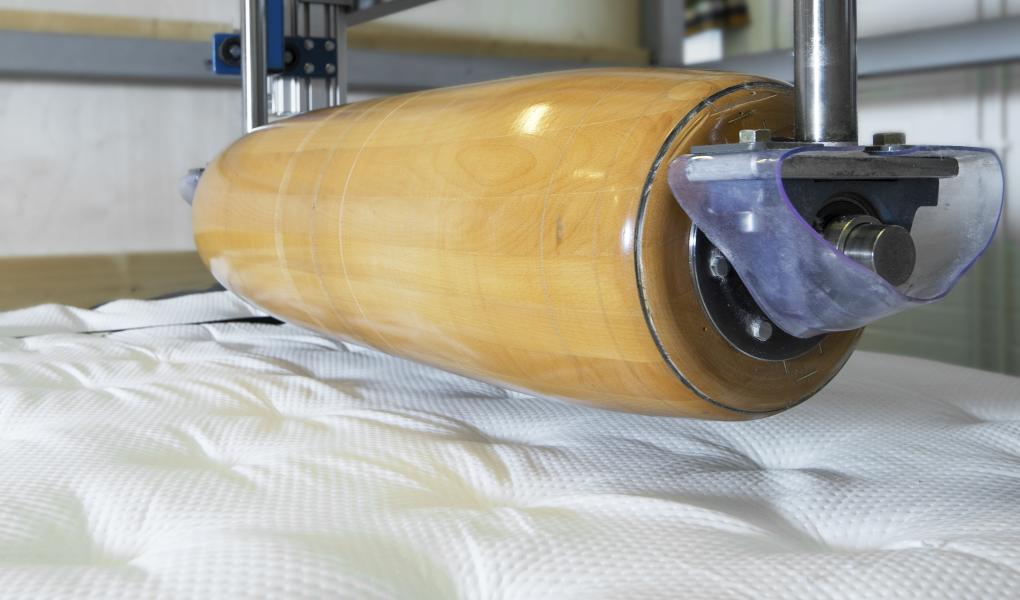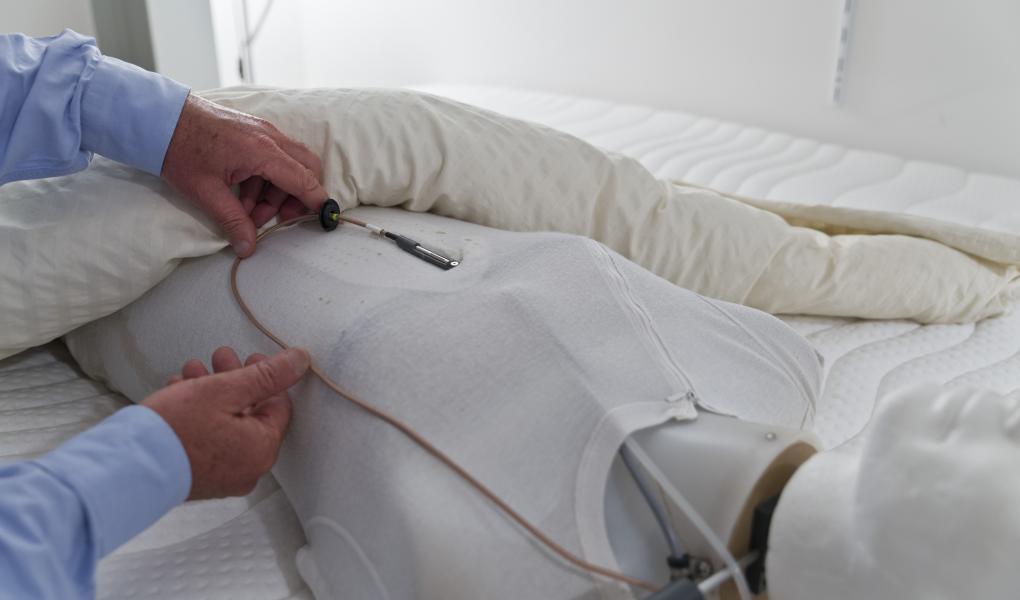Testfakta Research has carried out comparative laboratory tests of continental beds on behalf of the retailer Sova. The aim of the tests was to compare the quality and ergonomic characteristics of a selection of beds from the major manufacturers on the Swedish market. The selection criteria have been medium-firm beds with a recommended retail price of up to SEK 35,000.
The laboratory tests include the main elements of ergonomics/comfort and endurance/strength. Ergonomic and comfort characteristics were tested by the Ergonomie Institut München (EIM) in Munich, Germany, and the beds’ endurance and strength were tested by SP Technical Research Institute of Sweden (SP) in Borås.
The ergonomics and comfort tests include the following test stages:
The ergonomics and comfort tests were performed both with and without mattress toppers. The ergonomic characteristics were tested for three different body types: smaller/lighter people (approximately 155 cm tall and 50-55 kg), medium /medium-heavy people (approximately 175 cm tall and 70-75 kg) and larger/heavier people (approximately 185 cm tall and 85-90 kg).Spring characteristics
The spring characteristics describe the bed’s average firmness/softness but provide little or no information about the ergonomic characteristics of the bed. Measurements are taken in the bed’s zones for shoulders, hips, lower back and heels at three different pressures (100 N, 200 N and 300 N), and the results are given on a scale from very soft to very firm.Pressure distribution properties
States how the mattress surface distributes and reduces pressure from a particular part of the body. This value can be attributed more to the mattress surface and the material directly below the surface than the bed springs. Measurements are taken in the bed’s zones for shoulders, hips, lower back and heels and are given as an average in Newton per cm2.Elasticity and support for shoulders
States how much the bed yields beneath the shoulders. For side sleepers, the springs under the shoulders should yield enough to let the shoulder sink into the mattress, and thereby help the spine maintain a straight line between the lower back and nape of the neck. For back sleepers, the springs should provide enough support to stop the shoulders/upper back sinking down too far and causing a curving of the upper part of the spine (nape of the neck). The test is performed with two different indenters: one for the back-sleeper position with an area of 40 x 20 cm and one for the side-sleeper position with an area of 20 x 10 cm. The indenters are loaded with different pressures to simulate three different body types.Elasticity and support for the body (spine)
States the bed’s ability to support the natural S-shape of the spine. For back sleepers, pressure from the springs should provide adequate support to the different parts of the body (support for the lumbar region, flexibility/support for the pelvis/bottom and shoulders) in order to maintain the natural contours of the spine. The test is carried out with an indenter shaped like the body’s contours from the bottom to the neck (length 60 cm and width 25 cm with a curve depth of approximately 2.5 cm). The indenter is set with different pressures to simulate three different body types.Breathability
States the bed’s ability to wick moisture/sweat away from the body. Breathability is tested using a dummy that secretes moisture/sweat like a normal sleeping human. The dummy is placed under a standard duvet and measurements are taken continuously over a seven-hour period at a room temperature of 21°C. Breathability is based on the measured value after seven hours and stated in per cent as relative humidity.Heat-insulation ability
States the bed’s ability to retain body heat. Insulation ability is tested using a dummy with a body temperature equivalent to that of a normal sleeping human. The dummy is placed beneath a standard duvet and measurements are taken continuously over a seven-hour period at a room temperature of 21°C. Insulation ability is based on the measured value after seven hours and is given in degrees Celsius. The bed’s heat-insulation ability has not been evaluated because the characteristic has an individual value to the user.Tests for endurance and strength include the following test stages:
Fatigue testing of the spring characteristics
The beds are subject to 45,000 roll cycles by a barrel weighing 140 kg. The fatigue test corresponds to the load to which the bed is exposed over approximately 10-12 years’ normal use.Fatigue testing of bed, frame and base
The beds are exposed to 20,000 pressure cycles with a force of 1,000 N. The pressure loading is carried out in the centre of the bed and at the short and long sides of the bed.Fatigue testing of the sides of the bed
Both long sides of the bed are exposed to 25,000 pressure cycles with a force of 1,000 N. This test simulates the stress the bed is subject to when someone sits on the edge. After the fatigue testing, measurements are taken for loss of height (settling in mm) and changes in the bed’s spring characteristics.Impact testing of bed, frame and base
This test simulates high stresses, such as those that occur when children jump on a bed. In the test a 35 kg weight is dropped from a height of 30 cm in six different places on the bed, 10 times in each place. After the fatigue and impact testing is complete, the beds are split open and inspected for any damage to the springs/battens and pockets, intermediate layers (foam layer over the spring system), bed frame and bed slats.Weighting and scoring of the test results
The results from the different test stages were scored on a scale of 1 to 5, where 5.0 is the best and 3.0 is average. The scoring and weighting of the various test stages were carried out in consultation with the laboratories that performed the tests. The scores for the different test stages were weighted together into a total score as follows:- ergonomics and comfort characteristics 60% (result with mattress topper 50%, without mattress topper 25% and breathability 25%)
- endurance and strength 40% (settling 25%, change in spring characteristics 25% and damage after the tests 50%).


